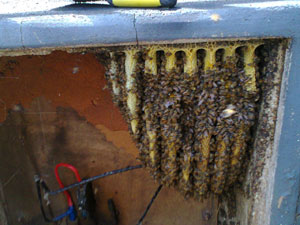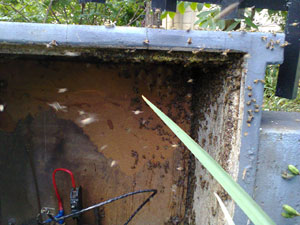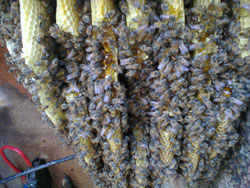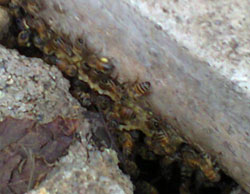 |
082 561 0346 sales@beeteam.co.za |
| Home About Bees Bee Removal Contact Us | |
Removing bees from electricity boxesWe seem to be removing a lot of bees from electrical boxes lately so we thought that we would share some of this with you.
Having access to your electricity box may become necessary at some point and having bees in the box will present a problem if not a danger. Click here to have one of our experienced bee removers to catch your bees and safely relocate them. Call us now on 082 561 0346Some photos related to bee catching and bee removals.The dangers of allowing bees to remain in an electricity boxBees are generally non agressive. But they need to be left alone to do what they are doing, and if they are harassed or feel threatened in any way they will react aggressively and sting the perpertrator. But by leaving the bees to continue building their hive in the electricity box you may be endangering others. Wax is flammable and the expansion of the hive may put pressure on the cabling inside the box and cause electrical outages or surges which could have negative repercussions on the recipients of the electricity. If possible have the bee remover switch off the current running to the box before he begins removing the bees and advise people in homes and buildings nearby of what is happening. This page was last updated on 24 November 2014. |
|



